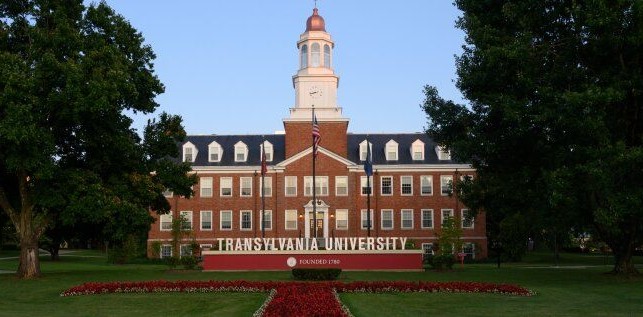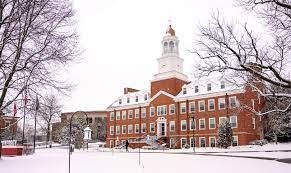
Few people realize that Transylvania University was the greatest college of the South for many decades. John Thelin reminds us of this in his History of American Higher Education book. “Located in the western region of Virginia in what was then known as Kentucky County, Transylvania University received its charter in 1780, when Thomas Jefferson was governor of the commonwealth. Twelve years later, the region would be granted statehood as Kentucky.”
“One measure of Transylvania’s success was the number of early national leaders it educated: 50 United States senators, 101 members of Congress, 36 governors, and 34 ambassadors. Other prominent alumni included Jefferson Davis, president of the Confederacy; the abolitionist Cassius Clay; and Stephen Austin, governor of Texas.
Thomas Jefferson was governor of Virginia when that state’s legislature chartered Transylvania in 1780 as the first college west of the Allegheny Mountains. He later looked to Transylvania as an educational model, writing to a friend in 1820 that “If…we [Virginians] are to go a begging any where for our education, I would rather it should be to Kentucky than any other state.” He stated that the U. of Virginia “had lost a good many students to this impressive institution (Transylvania).”
According to some historians interpretation of surviving documents and records, Transylvania was not only an early college, it could claim to be the oldest state university. In any event, Transylvania was highly regarded as a pioneering institution and was sometimes called the “Tutor to the West.” During the period 1818 to 1826, thanks to the energy of its president, Horace Holley, Transylvania demonstrated both success in its enrollments and innovation and excellence in its curriculum.
Holley, a transplanted New Englander, recruited faculty from the Northeast and also from England and the Continent. Although the original sponsors of the college had been Presbyterians, during Holley’s term as president Transylvania moved toward a Unitarian orientation. Curricular innovations included the addition of the sciences, especially botany, to the course of study. In addition to a college of liberal arts, Transylvania had a flourishing law school and medical department. Henry Clay, a young attorney from Virginia, taught for several years in the law department before representing Kentucky in both the U.S. Senate and House of Representatives. He was also the 7th House speaker as well as the 9th secretary of state. He unsuccessfully ran for president in the 1824, 1832, and 1844 elections.”

In 1820, Transylvania created the first law school and medical school in the West. The first medical fraternity was founded in 1820 at Transylvania. The society ultimately lead to the founding of the American Medical Association.
In 1880, The first recorded intercollegiate football game in the South is played: Kentucky University (Transylvania) vs. Centre College, with K.U. ousting Centre 13.75 to 0. The teams met again one week later with Transylvania winning 5.5 to 0.
If the case of Transylvania illustrates the potential for energetic innovation in the early nineteenth century, it also shows the risks of a meteoric rise and the erratic nature of fortune. Its location in Lexington, known at the time as the “Athens of the West,” attracted a distinguished faculty and president, and they were the toast of this prosperous town.
The price Transylvania paid was that its reputation as a flourishing center of the arts and sciences, its adoption of a Unitarian character, and its location in the most affluent town in the region ultimately alienated it from the rest of the state. This alienation was reflected in the punitive measures later taken by the Kentucky legislature, which was largely dominated by rural constituencies and was also an arena for bitter denominational disputes.
Unitarian Transylvania became the object of attacks by legislators representing rival religious groups, and support shifted to other Kentucky colleges. Despite its eventual institutional deterioration, Transylvania remained a significant regional and national presence for several decades.” From Thelin’s History of American Higher Education

